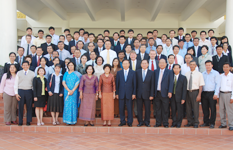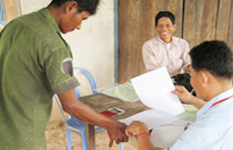Micro finance sector
Microfinance in Cambodia: Taking the Sector to the Next LevelIn Cambodia, economic activities are dominated by micro, small and medium enterprises (MSMEs) which are largely based in rural areas. These MSMEs are beyond the reach of the banking sector, which tends to concentrate on serving businesses in urban areas. Thus, microfinance institutions (MFIs) are principally the main providers of financial services to the rural economy. Services provided by MFIs could help the rural population, especially the poor, to increase their incomes and build up their assets. Microfinance also helps mitigate vulnerability to shocks such as sickness and natural disasters, and develops micro-enterprises. Microfinance, hence, plays an important role in the development of the country and alleviating poverty. Cambodia has one of the most rapidly developing microfinance sectors globally and is also internationally recognized as a success story. Presently, there are 28 licensed microfinance institutions, in addition to 26 NGOs providing microfinance services which are registered with the National Bank of Cambodia (NBC). In recent years, the microfinance sector in Cambodia has played a leading role in expanding the reach of the financial sector to the rural poor. The sector has experienced rapid growth over the last five years, reaching over a million borrowers and more than 520,000 savers in 24 provinces. By the end of 2008, the total loan portfolio in Cambodia was almost US$440 million while deposits were more than US$490 million. From 2006 –2008, the number of borrowers grew at a very rapid rate at 23%, 29% and 31%, respectively, while total MFI lending increased at a rate of more than 55% a year. Despite the tremendous success of microfinance in Cambodia, the sector still faces challenges that include a legal framework limiting the ability of MFIs to diversify products and services, and the high cost of funding that prevents MFIs from achieving their potential in helping to develop the rural economy as well as the country as a whole. For MFIs to achieve their potential to serve more clients, they need to be able to offer a wider range of products and services, to access local currency and to reduce their costs of funds so as to remain commercially sustainable, while serving the lower end of the market. |
 |










